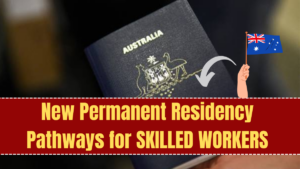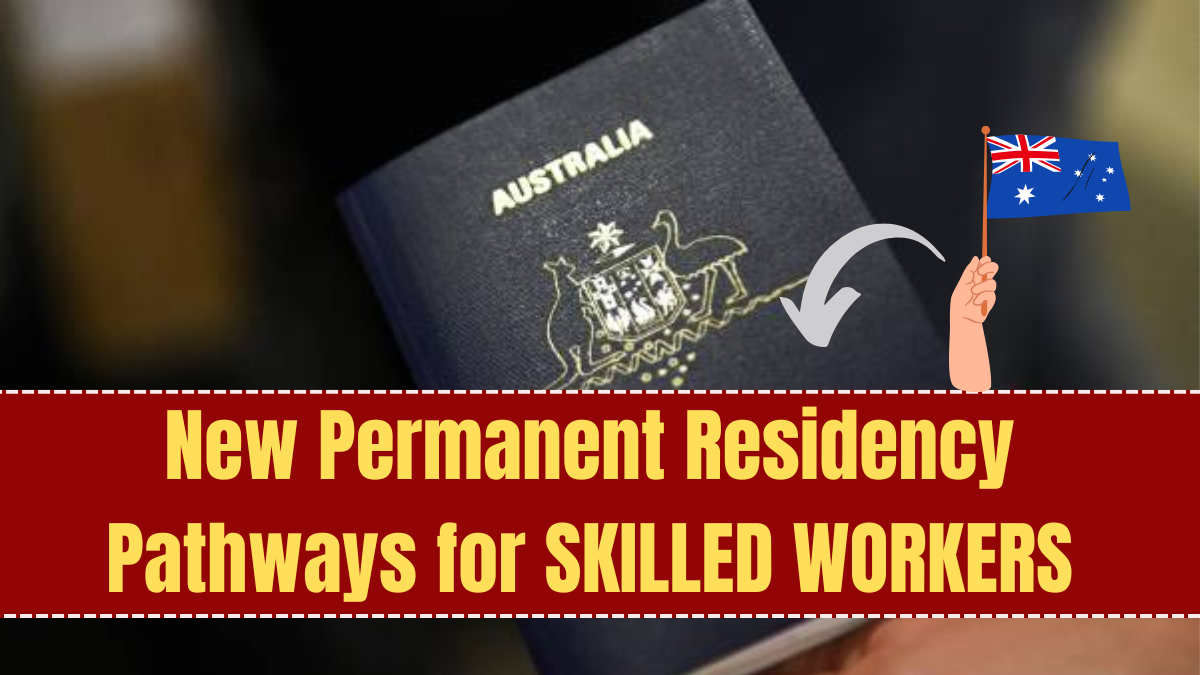Australia’s immigration system in 2025 has undergone important reforms to welcome skilled workers from across the world. With an emphasis on addressing labor market needs and strengthening regional areas, the government has introduced new pathways making permanent residency more accessible and attractive.
Here’s a complete breakdown of the latest options available for skilled workers seeking to make Australia their permanent home.

Skills in Demand (SID) Visa – Subclass 482
Launched in December 2024, the Skills in Demand (SID) visa replaces the Temporary Skill Shortage (TSS) visa. It creates a smoother path to permanent residency after two years of employment.
Key Features:
-
Three new streams: Core Skills, Specialist Skills, and Essential Skills
-
Core Skills Occupation List (CSOL) to define eligible professions
-
Transition to permanent residency after two years with any approved employer under the SID, TSS, or legacy 457 visa
This visa streamlines employer sponsorship, reducing administrative hurdles and supporting more workers to achieve PR faster.
Employer Sponsored Visa – Subclass 186
The Employer Nomination Scheme (ENS) visa continues to be a popular route for skilled workers, now offering even more flexibility in 2025.
Key Features:
-
Temporary Residence Transition (TRT) stream now enables PR after just two years of employment
-
No need to remain with the original employer who sponsored the initial visa
-
Direct Entry stream remains available for candidates with three years’ relevant work experience
With 44,000 places allocated for 2024–25, the Employer Sponsored Visa stream remains a major pillar of Australia’s skilled migration program.
Skilled Independent Visa – Subclass 189
For skilled workers not reliant on an employer or a state nomination, the Skilled Independent Visa remains a highly sought-after option.
Key Features:
-
No sponsorship or nomination required
-
Based on a points-tested system that factors in age, qualifications, work experience, and English language proficiency
-
16,900 spots allocated for the 2024–25 intake
Applicants with high points scores and qualifications in demand can benefit from a streamlined pathway directly to permanent residency.
Skilled Nominated Visa – Subclass 190
For those willing to commit to a particular state or territory, the Skilled Nominated Visa offers a strong PR pathway.
Key Features:
-
State or territory nomination is mandatory
-
Immediate permanent residency granted upon approval
-
33,000 places allocated in the 2024–25 migration program
State governments prioritize occupations based on local shortages, offering nominated candidates targeted support and quicker settlement.
Skilled Work Regional (Provisional) Visa – Subclass 491
Australia continues to push for regional development, making the Subclass 491 visa an important choice for skilled migrants.
Key Features:
-
Must live and work in a designated regional area
-
Requires nomination by a state or territory government or sponsorship by an eligible family member residing regionally
-
Provides a clear pathway to PR after three years of regional residence and employment
This visa supports economic growth in non-metropolitan areas while offering migrants an affordable lifestyle and strong community ties.
National Innovation Visa
Set to officially launch by the end of 2024, the National Innovation Visa will revolutionize migration for high-performing professionals.
Key Features:
-
Designed for leading business owners, significant investors, and global researchers
-
Direct pathway to permanent residency for successful applicants
-
Replaces the Global Talent and Business Innovation and Investment Program visas
This visa focuses on strengthening Australia’s position as a hub for innovation, technology, and entrepreneurship.
2024–25 Migration Program Planning Levels
Australia’s permanent Migration Program planning level for 2024–25 is 185,000 places. Roughly 70% of this will be allocated to skilled migration.
Breakdown:
| Category | Places Allocated |
|---|---|
| Skill Stream | 132,200 |
| Family Stream | 52,500 |
| Special Eligibility Stream | 300 |
This planning ensures Australia remains competitive in attracting the world’s best talent while balancing family reunification and humanitarian commitments.
Annual Indexation of Skilled Visa Income Thresholds
Starting from 1 July 2025, the minimum salary thresholds for employer-sponsored skilled visas will rise by 4.6%, aligned with national wage growth trends. This update ensures skilled migration continues to attract high-quality applicants while safeguarding local employment standards.
Regional Migration Initiatives
New initiatives for regional areas, including expanded Designated Area Migration Agreements (DAMAs), aim to match skilled migrants with long-term employment opportunities in rural and outer suburban locations. These programs offer faster PR pathways and additional support for settlement outside major cities.
FAQs
What is the fastest pathway to permanent residency for skilled workers in Australia?
The Skills in Demand (SID) visa provides a streamlined pathway to PR after just two years of employment with an approved employer.
Can I apply for the Subclass 189 visa without state nomination?
Yes, the Subclass 189 visa is a fully independent visa and does not require state or employer nomination.
What are the benefits of the Subclass 491 visa?
The Subclass 491 visa allows skilled workers to live and work in regional areas and offers a clear pathway to permanent residency after three years.
When will the National Innovation Visa become available?
The National Innovation Visa is expected to officially launch at the end of 2024, providing new opportunities for innovators and researchers.
How will the income threshold changes affect skilled visa applicants?
From 1 July 2025, skilled visa applicants will need to meet slightly higher minimum salary thresholds, reflecting a 4.6% increase aligned with national wage growth.
Click here to know more.
Aanchal is a passionate writer with a keen interest in storytelling, content creation, and creative expression. She enjoys exploring diverse topics and crafting engaging narratives that captivate readers.

